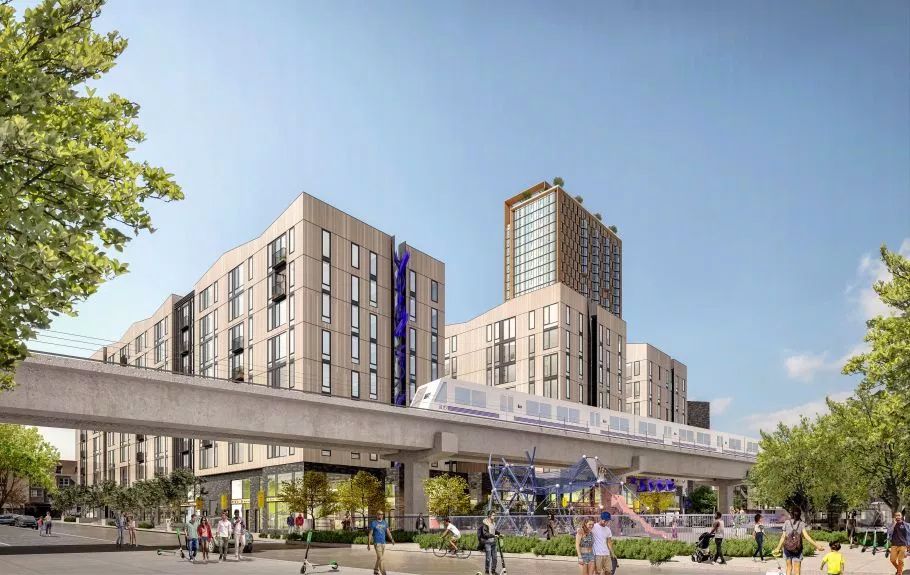A huge new residential development encompassing an entire city block in West Oakland was unanimously approved by Oakland's Planning Commission on Thursday, with plenty of community support.
The project from prolific local developer Patrick Kennedy will take what's currently an undeveloped piece of asphalt across from The Crucible and turn it into transit-oriented apartment complex consisting of three buildings and 1,032 units. The majority of those units will be in a 32-story high-rise that will become a highly visible new piece of the Oakland skyline, and construction may begin as soon as next spring. The block is bounded by Seventh, Fifth, Kirkham, and Union Streets, and it is one block east of the West Oakland BART Station.
As the East Bay Times reports, the Oakland City Council still needs to give its okay, but the project comes with significant backing from those in the community who are eager to see this long neglected stretch of Seventh Street get revived. A decade-old development across Seventh from the BART station made some impact, but it did not bring any retail activity or foot traffic to the street level, and this project will include 35,000 square feet of retail and commercial space, including a restaurant and bar across from the Crucible called 7th West.

"This parcel clearly had trouble, beginning with a freeway that the community may or may not have wanted,” planning commissioner Jonathan Fearn said at Thursday's meeting, per the East Bay Times. “But it’s good to see that its future form is something that the community can rally around and get their stamp on it."
Fearn may have been referring to the 35 people who appeared at the meeting to give public comment on the project, none of whom had any objections, only support.
The project includes affordable units as mandated under city law, and 85 of those units will be designated for the "very low" income bracket.

Seventh Street in West Oakland was once known as the Harlem of the West — though that moniker was also given to the Fillmore District in San Francisco. After brief jazz heydays in the post-war period, both neighborhoods fell victim to eminent domain and regional and city projects that gave little recognition to the African American communities that lived there and how those projects would impact them. In the case of the Fillmore, it was a massive redevelopment project — now seen as racist — that razed hundreds of homes and businesses and displaced thousands. In the case of West Oakland, it was the construction of the 880 and Cypress freeways — the latter of which collapsed in the 1989 earthquake and has been replaced with Mandela Parkway — BART, and the huge U.S. Postal Service hub that effectively killed the neighborhood.
Nightclubs like Esther's Orbit Room, the Lincoln Theater and Slim Jenkins Supper Club on Seventh Street played host to the likes of Aretha Franklin, Ike and Tina Turner, Billie Holiday, B.B. King, Nat King Cole, Al Green, and Etta James. But once the freeways went in, and the elevated BART track was built right along Seventh, nothing would ever be the same. As the Chronicle explained in this piece from 2006, Oakland blues was born there — a genre that some musical historians believe should be recognized alongside New Orleans jazz and Chicago blues. But the BART tracks in particular made operating a music venue near impossible. "To save money, the [BART] line was built overhead — unlike the underground lines in Berkeley and downtown Oakland — right down the middle of Seventh. The noise created by the trains made it difficult for musical acts to play."
Residents now clearly hope that this huge new development will be the key to bringing street life back to the corridor, which has felt like an industrial district for decades — hence businesses like the Crucible, which needed a large warehouse space for metal work, made their home there.
Speaking to the Chronicle, Steve Lowe, vice president of the West Oakland Commerce Association, says, "I think everybody wants to see ... vitality on Seventh Street. We want to see all that come back, if possible. So I think that is kind of the direction we are headed in."
Kennedy estimates that the project could be complete by late 2021.

